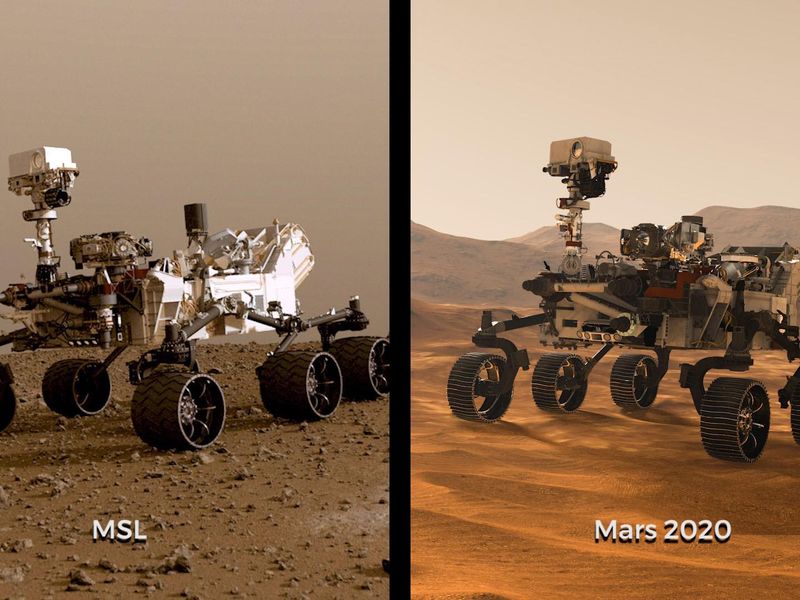
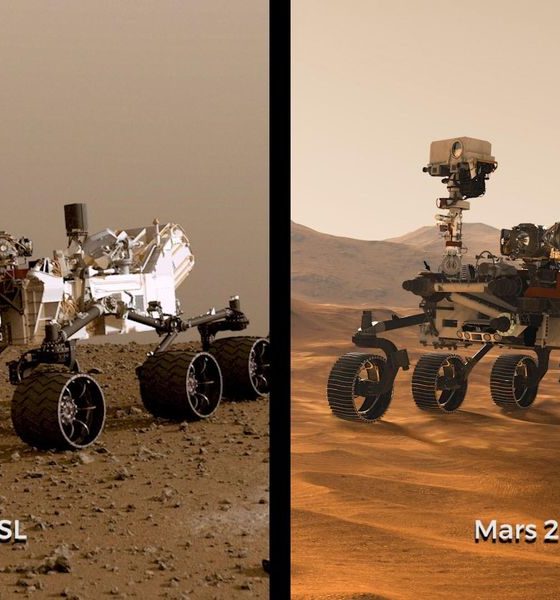
Space
A Tale of Two Rovers: How does Mars 2020 compare to Curiosity?
NASA’s next Mars rover is almost ready to launch. Engineers recently took it for a test spin, before shipping it off to its Cape Canaveral launch site. The six-wheeled rover will blast off this July; once it arrives on Mars, it will scour the red planet for signs of ancient life.
The Mars 2020 rover, which should receive a name very soon, is nearly identical in appearance to its predecessor, the Curiosity rover. After landing on Mars in 2012, Curiosity has spent its time exploring Gale Crater, a 96-mile-wide crater.
It was once the site of an ancient lake and stream system; scientists believe that it may have been able to support life. However, like the rest of the planet’s surface, the area is dry today.

The twin rovers, Spirit and Opportunity landed on Mars in 2004 with one major goal: to follow the water. Right out of the gate, the duo proved that water once flowed on the surface of Mars. But what happened to it?
To answer that question, NASA launched the supersized Curiosity rover to learn more. Since landing in 2012, Curiosity discovered that Gale Crater was once home to an ancient lake billions of years ago and that it could have supported microbial life. The rover is still scouring the crater, hunting for clues as it climbs Mount Sharp, a 3-mile-tall (5-kilometer-tall) peak within the crater — that scientists believe was partially formed by water.
3,760 miles (6,050 kilometers) away, Mars 2020 will explore Jezero Crater, the site of an ancient delta. Here the rover will take the next scientific step: It will look for actual signs of past life, called biosignatures, by analyzing samples of rocks and soil. It will also bag up samples that could be retrieved by future missions and eventually returned to Earth for more in-depth analysis.

Mars 2020 is essentially a souped-up version of the Curiosity rover, but charged with searching for signs of life and collecting samples for eventual return to Earth. The new rover is estimated to cost $1.9 billion dollars and will carry a suite of 7 specialized instruments that will science the hell out of Mars.
But first the rover has to land on Mars. To do so, it must survive a harrowing process known as entry, descent, and landing (aka seven minutes of terror).
To the untrained eye, Mars 2020 looks like an identical copy of Curiosity, but if you look closely, you can tell that the two apart. Building a rover from scratch is extremely difficult and expensive. The folks at NASA built on the success of Curiosity and added new capabilities. A process that enabled more science at a reduced cost.
The beefier Mars 2020 rover is about 280 lbs. (127 kilograms) heavier than its counterpart. That’s because it carries different tools, like a larger drill. This enables the new rover to drill into rocks, extracting rock cores rather than just smashing them.
We all love the epic robot selfies and stunning views of Martian landscapes so of course the new rover will be packing multiple cameras. Curiosity is equipped with 17 cameras; by comparison, Mars 2020 will have 23 that will shoot mostly in color. Additionally, Mars 2020’s Mastcam-Z will film in high definition and be able to zoom.
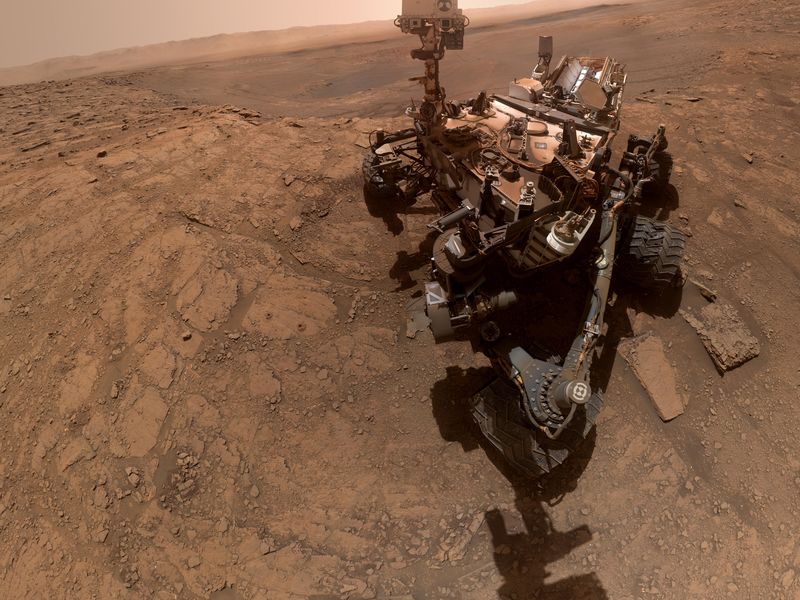
Mars 2020 will also carry not one but two microphones on its journey so all of us back here on Earth can hear what Mars sounds like. The microphones will record the rover’s landing on Mars, as well as the Martian wind and will listen as the rover zaps scientific targets with its on board laser.
Another design improvement will be the wheels. Curiosity was equipped with aluminum wheels, which have been badly beaten up by the rugged Martian terrain. Sharp rocks have proved to be troublesome, with NASA modifying the rover’s driving plan to ensure Curiosity makes it through its mission. To avoid these kinds of issues, engineers made Mars 2020’s wheels more robust.
“Extensive testing in JPL’s Mars Yard has shown these treads better withstand the pressure from sharp rocks but work just as well on sand,” NASA officials said in a news release.
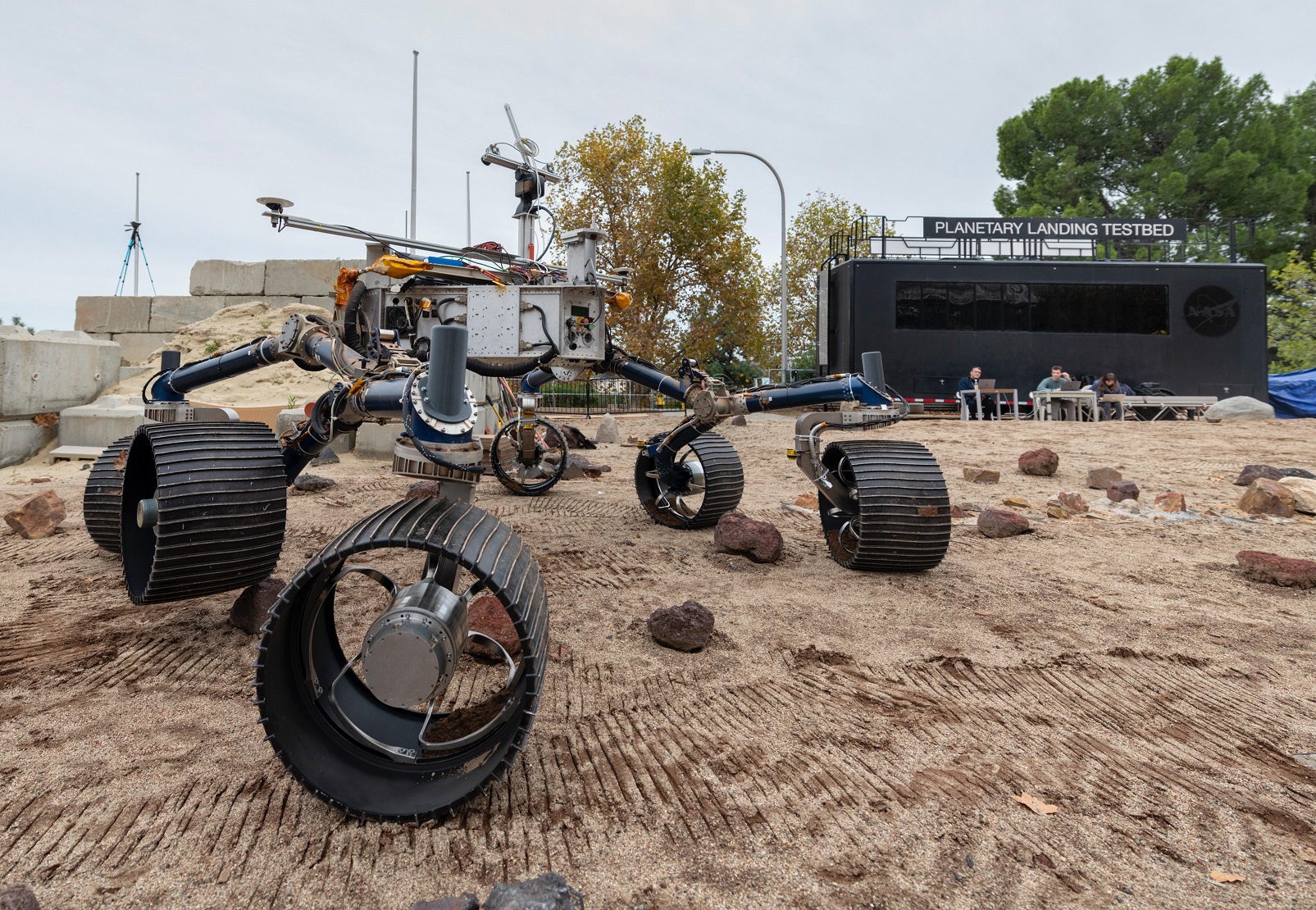
NASA plans to return to the moon and eventually send humans to Mars. To that end, the Mars 2020 rover will help pave the way for future missions. The rover will carry spacesuit samples to determine how they degrade over time, as well as a subsurface radar instrument that could potentially be used to find buried water ice.
Additionally, an oxygen generator will test technology that future astronauts could use to make their own rocket fuel from the Martian atmosphere.

Cybertruck
Tesla Cybertruck fleet takes over at SpaceX’s Starbase
Interestingly, the Cybertruck uses the same exterior, a stainless steel alloy, as SpaceX rockets. This synergy between the two companies and their very different products shows a very unified mentality between Musk companies.

Tesla Cybertrucks have taken over at SpaceX’s Starbase facility in Texas, as hundreds of the all-electric pickup trucks were spotted late last week rounding out a massive fleet of vehicles.
The Cybertruck fleet is geared toward replacing gas vehicles that are used at Starbase for everyday operations. The only surprise about this is that it was not done sooner:
Was just visiting. pic.twitter.com/5Q9wPPaeuH
— Derek Li (@derek1ee) October 31, 2025
Deliveries have been going on for a few weeks, as Cybertrucks have made their way across the state of Texas from Austin to Starbase so they could be included in SpaceX’s fleet of vehicles at the facility.
Interestingly, the Cybertruck uses the same exterior, a stainless steel alloy, as SpaceX rockets. This synergy between the two companies and their very different products shows a very unified mentality between Musk companies.
However, there are some other perspectives to consider as SpaceX is utilizing such a massive fleet of Cybertrucks. Some media outlets (unsurprisingly) are seeing this as a move of weakness by both Tesla and SpaceX, as the aerospace company is, in a sense, “bailing out” lagging sales for the all-electric pickup.
It’s no secret that Tesla has struggled with the Cybertruck this year, and deliveries have been underwhelming in the sense that the company was anticipating between 1 million and 2 million orders for the vehicle before it was widely produced.
A lot of things changed with the Cybertruck between its 2019 unveiling and 2023 initial deliveries, most notably, price.
The price of the Cybertruck swelled significantly and priced out many of those who had pre-ordered it. Some have weighed the option of whether this purchase was a way to get rid of sitting inventory.
However, it seems more logical to consider the fact that SpaceX was likely always going to transition to Teslas for its fleet, especially at Starship, at some point.
It doesn’t seem out of the question that one Musk company would utilize another Musk company’s products, especially considering the Cybertruck has been teased as the vehicle that would be present on Mars.
News
SpaceX opens up free Starlink service for those impacted by Hurricane Melissa

SpaceX is opening up its internet service, Starlink, to those impacted by Hurricane Melissa, as it made landfall in Jamaica and the Bahamas as a Category 5 storm.
Hurricane Melissa is expected to reach wind speeds of over 165 MPH over the next few days as it extends out into the Atlantic Ocean by Thursday and Friday.
Satellite imagery shows Hurricane #Melissa‘s growth from its formation on October 21 to a Category 5 hurricane through October 27, 2025. #HurricaneMelissa pic.twitter.com/goR3Hbgb9c
— The Weather Network (@weathernetwork) October 27, 2025
Citizens in Jamaica and the Bahamas have been preparing for the storm for the past week, getting necessary goods together and preparing for the massive storm to arrive. It finally did yesterday, and the first images and video of the storm are showing that it could destroy many parts of both countries.
Starlink is now being opened up for free until the end of November for those impacted by the storm in Jamaica and the Bahamas, SpaceX announced today:
For those impacted by Hurricane Melissa in Jamaica and the Bahamas, Starlink service is now free through the end of November to help with response and recovery efforts → https://t.co/fUko3xSviJ
— Starlink (@Starlink) October 28, 2025
It is a move similar to the one the company made last year as Hurricane Helene made its way through the United States, destroying homes and property across the East Coast. SpaceX offered free service for those impacted by the destruction caused by the storm.
The free Starlink service was available until the end of 2024.
Elon Musk’s companies have also made similar moves to help out those who are impacted by natural disasters. Tesla has offered Free Supercharging in the past, most notably during the California wildfires.
Tesla and SpaceX’s LA fire relief efforts: Cybertrucks, free Starlink and more
One major advantage of Starlink is that it is available for use in situations like this one, where power might be required to operate things like a modem and router.
Internet access is a crucial part of survival in these situations, especially as it can be the last leg some stand on to get in touch with emergency services or loved ones.
News
SpaceX reaches incredible Starlink milestone
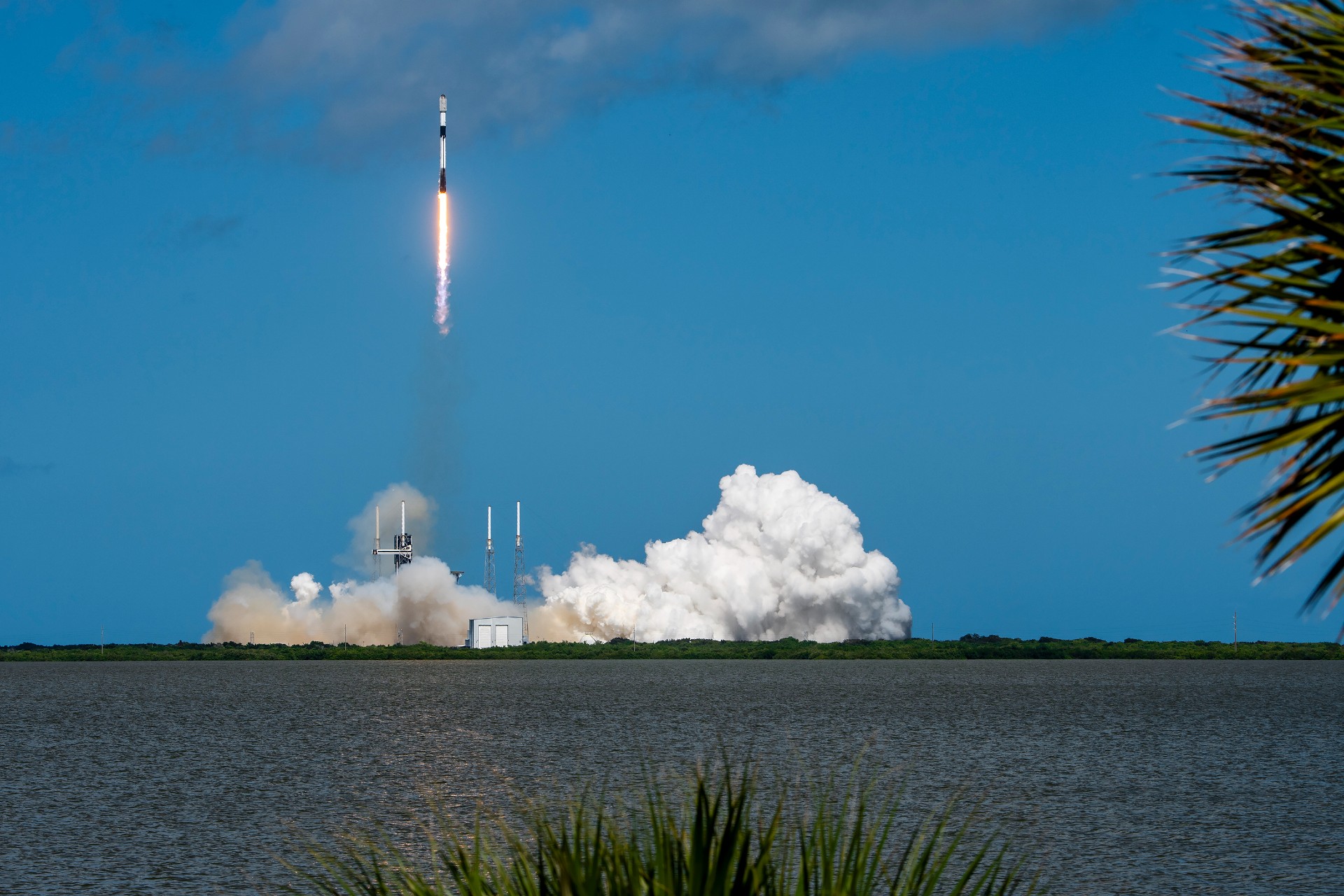
SpaceX has reached an incredible milestone with its Starlink program, officially surpassing 10,000 satellites launched into low Earth orbit since starting the program back in 2019.
Last Sunday, October 19, SpaceX launched its 131st and 132nd Falcon 9 missions of 2025, one from Cape Canaveral, Florida, and the other from Vandenberg, California.
The 10,000th Starlink satellite was aboard the launch from California, which was Starlink 11-19, and held 28 v2 mini optimized satellites.
The achievement was marked by a satellite tracker developed by Jonathan McDowell.
🚨 With its Falcon 9 launch last Sunday, SpaceX officially has 10,000 Starlink satellites in orbit pic.twitter.com/xS5RVZ4ix0
— TESLARATI (@Teslarati) October 26, 2025
The first Starlink launch was all the way back on May 23, 2019, as SpaceX launched its first 60 satellites from Cape Canaveral using a Falcon 9 rocket.
Of the over 10,000 satellites in orbit, the tracker says 8,608 are operational, as some are intentionally de-orbited after becoming faulty and destroyed in the atmosphere.
SpaceX has truly done some really incredible things during its development of the Starlink program, including launch coverage in a global setting, bringing along millions of active subscribers that use the service for personal and business use, locking up commercial partnerships, and more.
Starlink currently operates in around 150 countries, territories, and markets and is available at least somewhere on all seven continents.
Additionally, Starlink has over 5 million subscribers worldwide, and 2.7 million have joined the program over the past year. It has revolutionized internet access on commercial aircraft as well, as several high-profile airlines like Qatar and United, among many others, have already installed Starlink on some of their planes to deliver more stable connectivity for passengers and crew.
SpaceX has the approval to launch 12,000 Starlink satellites from the FAA, but it plans to bring over 30,000 to its constellation, giving anyone the ability to have access to high-speed internet.








